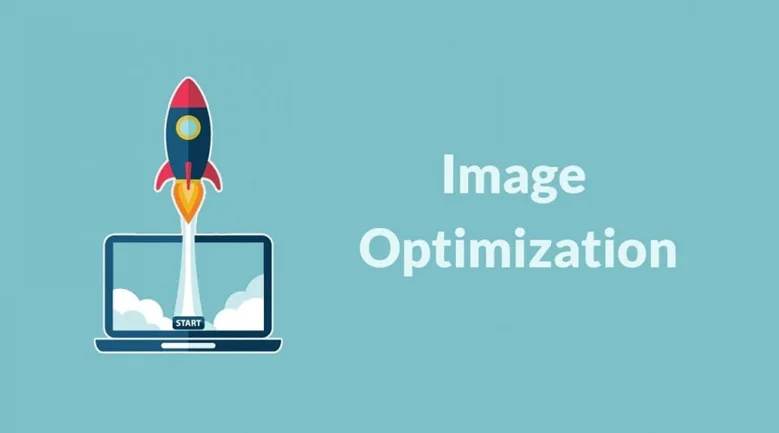When someone visits your website, you have just a few seconds to make a solid first impression. But even the most beautifully designed pages can fail if they load slowly—especially on mobile devices. A major reason behind sluggish websites? Heavy, unoptimized images.
Whether you’re running an eCommerce store, a blog, or a corporate website, image-heavy content can drain your site’s speed, frustrate users, and hurt your search engine rankings. That’s where image optimization service and page speed optimization services come in—helping you deliver high-quality visuals without sacrificing performance.
This guide will help you understand everything you need to know about optimizing images for the web—why it matters, how to do it effectively, and what tools can simplify the process.
What is Image Optimization?

Image optimization is the process of delivering high-quality visuals in the smallest possible file size. This means reducing image weight without sacrificing visual clarity. Whether you’re compressing large photos, resizing dimensions, or using modern image formats, optimization ensures your website loads quickly and efficiently.
Why is Image Optimization So Important?
Images often make up more than 60% of a website’s total weight. Without proper optimization, your pages become bloated, sluggish, and frustrating for users. Here’s why investing in a reliable image optimization service is essential:
- Faster Load Time: Smaller files load quicker, enhancing user experience.
- Better SEO: Speed is a ranking factor for Google. Faster pages = better search rankings.
- Lower Bandwidth Usage: Optimized images reduce server strain and hosting costs.
- Higher Conversions: Faster websites retain users and improve conversion rates.
- Mobile Experience: With varying device types and network speeds, responsive image optimization is key to delivering a consistent experience.
How to Optimize Images for Better Site Performance?
Here’s a step-by-step guide to effective image optimization. Whether you’re a developer, designer, or marketer, these methods will help you deliver blazing-fast pages.
1. Run a Performance Benchmark
Before you start optimizing, evaluate your current website speed. Use tools like:
- Google PageSpeed Insights
- GTmetrix
- WebPageTest
- Pingdom
These tools help identify large image files, unused formats, and areas where page speed optimization services can be implemented.
2. Choose the Right File Format
Not all images are created equal. Choosing the right format can make a significant difference:
- JPEG: Ideal for photographs with rich colors. Offers good quality at smaller sizes.
- PNG: Best for logos and transparent images.
- WebP & AVIF: Modern formats offering better compression and quality compared to JPEG/PNG.
- GIF: Use sparingly due to limited color support and larger file sizes.
Pro Tip: A smart image optimization service will automatically convert images to next-gen formats like WebP and AVIF, based on browser support.
3. Resize Images Before Uploading
Uploading images larger than needed increases page weight unnecessarily. For example, don’t upload a 2000px-wide image if your website displays it at 800px. Resize your visuals using tools like:
- Photoshop
- Canva
- Paint
- Preview (Mac)
Or use a service that auto-resizes images based on screen size and resolution.
4. Compress Without Losing Quality
Compression is the backbone of image optimization. There are two types:
- Lossless Compression: Reduces file size without affecting quality. Preserves every pixel of the original image.
- Lossy Compression: Slight quality loss, but much smaller file sizes. Removes some image data to achieve higher compression.
Top tools include:
- TinyPNG
- ImageOptim
- JPEGmini
- Imagify
These tools work well manually, but scaling them across hundreds of images is best handled by an image optimization service that automates the process in real-time.
5. Use AI-Powered Cropping and Smart Scaling
Modern solutions use AI/ML to intelligently crop and scale images. This ensures the most important part of the image (like a product or a person’s face) remains in focus, improving UX dramatically. For example, smart cropping can detect facial features or product boundaries and adapt the size accordingly—without user intervention.
6. Lazy Load Your Images
Lazy loading defers loading images until they’re visible on the screen. This speeds up initial page load time and reduces resource usage. Most WordPress themes and frameworks support lazy loading by default, or you can install plugins like:
- Smush
- Lazy Load by WP Rocket
7. Leverage CDN for Image Delivery
Combining image optimization with a page speed optimization service backed by a powerful CDN (Content Delivery Network) brings exponential performance benefits:
- Edge caching for low-latency delivery
- Unlimited cache for frequently used assets
- Real-time image transformations based on user’s device, bandwidth, and location
One such solution, N7 – The Nitrogen Platform, offers AI-powered image optimization with zero-code integration and built-in CDN for ultrafast delivery. With support for next-gen formats, dynamic resizing, and smart compression, it helps brands reduce image load time by up to 3X and save on bandwidth by 30%.
Conclusion
Great visuals shouldn’t come at the cost of performance. With the right image optimization service, you can strike a perfect balance between visual appeal and lightning-fast speed. Whether you’re running an eCommerce store, a portfolio, or a content-heavy platform, optimized images play a major role in retaining users and improving search rankings.

